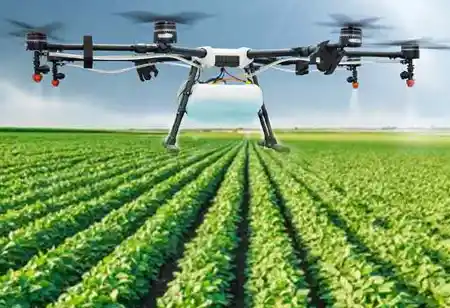Thank you for Subscribing to Agri Business Review Weekly Brief
Impact of Telecom on Agricultural Production

By
Agri Business Review | Wednesday, April 28, 2021
Stay ahead of the industry with exclusive feature stories on the top companies, expert insights and the latest news delivered straight to your inbox. Subscribe today.
It has been demonstrated that improving information services via telecommunications technology increases rural wages.
FREMONT, CA: It has been demonstrated that improving information services via telecommunications technology increases rural wages. Access to public telephones, particularly individual mobile phones, grows agricultural output, facilitates market access, and expands rural producers' marketing opportunities. Precise agriculture has been enabled by multiple technologies, including GPS, GIS, image analysis software, low-cost microcomputer-based variable rate controllers or recorders, and precision tractor steering systems.
While these technologies have enabled precision agriculture, many barriers must be addressed before this new technique is recognized and adopted. The bulk of farmers will rely on commercial sources to analyze their images and generate prescription maps. Managing and retrieving multi-megabyte data files for each field continues to be a challenge.
In most emerging economies, the private sector is leading the telecommunications revolution in rural areas. This does not preclude the public sector from playing a role. On the contrary, telecommunications penetration in emerging countries is far from complete, implying a sizable untapped potential for further rural income growth. Complementary investments in public goods such as infrastructure and services are required to maximize the impact of telecommunications on rural welfare.
Function of Agriculture Innovation System (AIS)
AIS's primary functions are to collect, process, and convey "ready-to-use" site-specific production data to the user on the machinery during field operations. For instance, while an agricultural sprayer is spraying nitrogen onto a field, the AIS will identify the sprayer's location and wirelessly provide the sprayer with a proper nitrogen prescription for the specific site, enabling precise variable rate nitrogen administration. Bare-bones AIS consists of a GPS sensor for tracking sprayer location, a database for providing site-specific nitrogen prescription data, and a data transfer network to carry out these functions.
Collecting Data for Production
Field data collection is crucial for effective precision agriculture operations. Data interchange between sensing and processing units must be reliable and timely for sensed field data to be meaningful to field operators. One of the most often collected field data in today's agriculture industry is the location of machinery in the field during operation.
The positioning of equipment is critical for machinery navigation and all forms of site-specific management. GPS receivers are widely used on agricultural machines to instantly determine an object's absolute position in global coordinates through satellites.
Numerous information and communication technology (ICT) in agriculture or e-agriculture programs have been developed and tested globally to aid farmers in improving their livelihoods through increased agricultural output and revenue or risk reduction.





